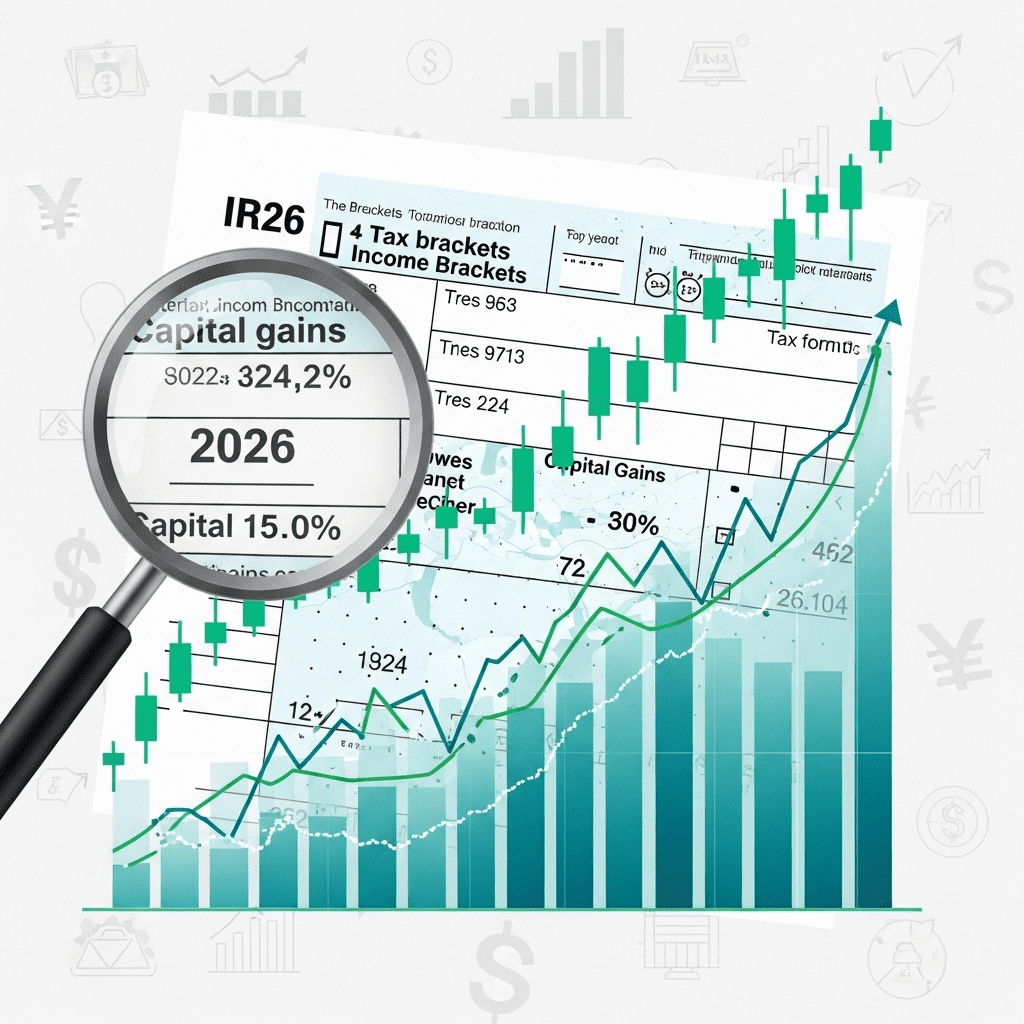The new IRS tax brackets for 2026 have just been released, providing essential guidance for taxpayers looking to understand how upcoming changes may influence personal finances, investment returns, and overall tax liability. Whether you’re a seasoned investor or planning your financial year ahead, knowing where you fit in these updated brackets is crucial for maximizing potential returns and strategizing for the future.
How the New IRS Tax Brackets for 2026 Affect Investors
The new IRS tax brackets for 2026 reflect adjustments for inflation and economic trends, directly affecting capital gains, dividend income, and strategic investment decisions. For investors, these changes aren’t just about how much you owe—the brackets influence everything from withdrawal timing to portfolio diversification strategies. Understanding where your income falls in the updated brackets is a key step in optimizing your approach, especially as the market responds to shifting tax policies and regulatory updates.
Key Changes in the 2026 Federal Income Tax Brackets
The 2026 tax brackets bring notable modifications from previous years. Here’s what investors and earners should pay attention to:
- Bracket Adjustments: Annual inflation adjustments have slightly increased the thresholds for each bracket. This can mean more of your income is taxed at a lower rate, depending on wage or investment gains.
- Marginal Rates: The familiar seven-bracket system remains: 10%, 12%, 22%, 24%, 32%, 35%, and 37%. However, the income ranges within each have shifted, reflecting cost-of-living changes and legislative mandates.
- Capital Gains Alignment: While capital gains and qualified dividend tax rates are generally separate, your ordinary income tax bracket can influence how much you owe on investment profits. Stay proactive with your strategy as these numbers move.
For updated insights on how tax laws impact broader market dynamics, visit our market analysis resources.
Strategic Planning with the New IRS Tax Brackets for 2026
For investors, understanding which bracket you fall into unlocks several tax-saving strategies:
- Harvesting Gains: If your taxable income places you in a lower bracket, you may realize more gains at favorable rates. On the other hand, bumping into a higher bracket may call for deferring sales or seeking tax-advantaged investments.
- IRA and Retirement Contributions: Adjusting contributions to tax-deferred accounts can strategically reduce taxable income, potentially keeping more capital in lower brackets and favorably affecting both current year and retirement taxes.
- Dividend Strategy: The treatment of qualified dividends is linked to your overall income level. For high-income investors, planning dividend payouts around tax year brackets can make a measurable difference.
- Charitable Giving: Increasing charitable donations can reduce your taxable income, potentially dropping you into a lower bracket and further reducing total tax owed.
To see the broader context of how these moves fit into your overall portfolio, consult the latest investment insights.
Practical Example: Comparing Tax Bracket Impacts
Consider an investor with $180,000 in taxable income in 2026. Under the new brackets, a larger share of this income may remain in the 24% bracket than before, providing a meaningful reduction in effective tax rate compared to earlier years. Factoring in capital gains and dividends pushes strategic planning to the forefront—especially as taxable events in your portfolio become more sensitive to slight changes in bracket thresholds.
What This Means for the Stock Market and Your Investments
Changes in federal tax brackets ripple through the stock market and investment community. Investors may adjust strategies to take advantage of the updated thresholds and rates, possibly increasing activity in tax-favored securities or triggering a rise in end-of-year portfolio rebalancing. For retirement savers, these adjustments affect not only take-home earnings but also the after-tax growth of assets in both taxable and tax-deferred accounts.
Staying informed about incremental changes, like the new IRS tax brackets for 2026, ensures you’re prepared to manage investments efficiently. Staying proactive can help you minimize surprises at tax time, while contributing to long-term financial stability.
Stay Ahead with Financial and Tax Planning
Anticipating movements in federal tax thresholds is only part of a successful investment strategy. Combining awareness of these tax brackets with diversification, regular portfolio review, and professional guidance sets you up for optimal returns. Whether you’re a self-directed investor or work with an advisor, now is the right time to update your forecasting tools, revisit your year-end tactics, and understand exactly how the upcoming IRS tax rules affect your next move in the market.
For more tips on preparing for tax season or aligning your investments with federal tax changes, explore our latest financial education guides.
